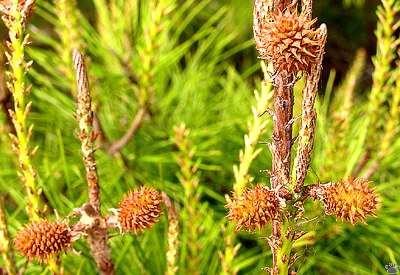
Young cones of sand pine (Pinus clausa), Archbold Biological Station. |
Florida, part 4: Pines, shrubs and vines
Extensive wetlands can be found all over Florida, but much of the interior is relatively dry, and was originally occupied by pine forest, sand scrub, and patches of prairie. Large tracts of pine still remain, particularly in the northern part of the Peninsula. Historically, fire-resistant longleaf pine was the dominant species, but decades of fire suppression, logging, and planting have resulted in its replacement by faster-growing species. Some plants and animals live only in longleaf pine forests, which are now mostly confined to a few protected areas.

Forest of longleaf pine (Pinus palustris), Platt Ranch Wildlife Management Area. |
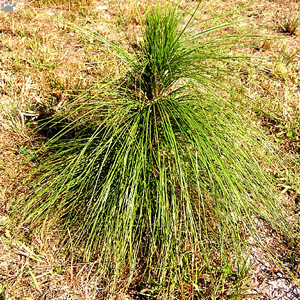
Baby longleaf pine, Osceola National Forest. |
Young longleaf pines have the longest needles of any conifer in the world. Tight ball of needles protects the central bud from fire. After a few years, these babies begin rapid growth. |
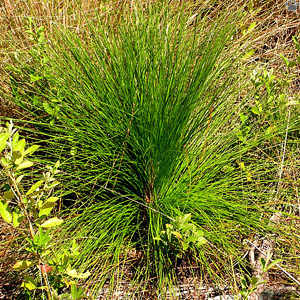
Baby longleaf pine, ONF. |
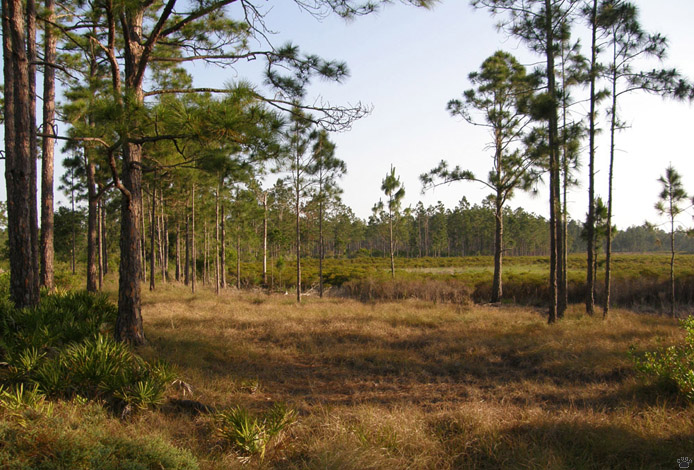
Cutthroat seep in longleaf pine forest, Arbuckle State Forest. |
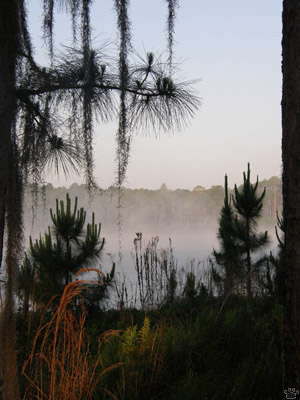
Morning in longleaf pine forest, ASF. |
One habitat type of longleaf pine forest are unique to Florida - the fragile cutthroat seeps, small forest wetlands covered wit cutthroat grass (Panicum abscissum). A few plants are endemic to these wetlands. |
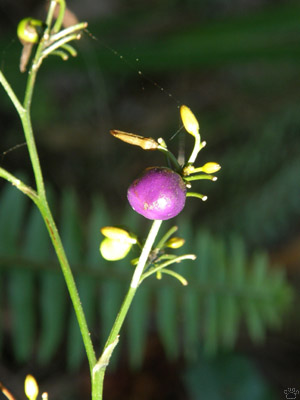
Unidentified berry, ASF. |
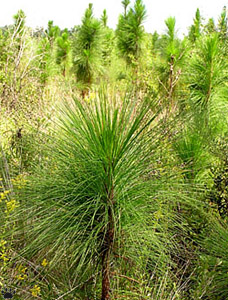
Teenage longleaf pine, ONF. |
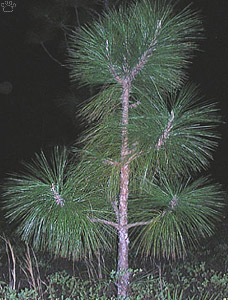
Young longleaf pine, PRWMA. |
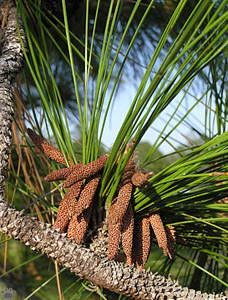
Male cones of longleaf pine, PRWMA. |
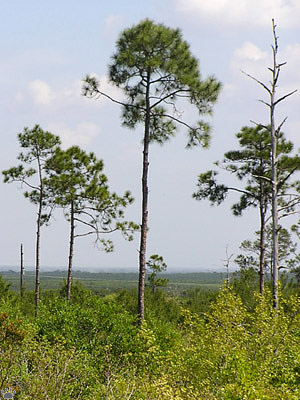
Slash pines (Pinus elliottii), ABS. |
In less dry areas with sandy or limestone soil, slash pine is very common. It is the only native pine species in the Everglades and on the Florida Keys. Unlike longleaf pine forests, slash pine groves usually have dense undergrowth. |
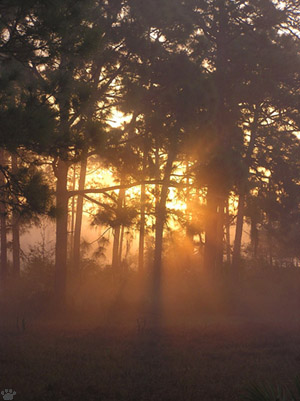
Forest of slash pine, Big Torch Key, National Key Deer Refuge. |
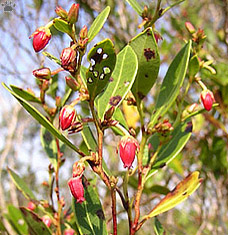 |
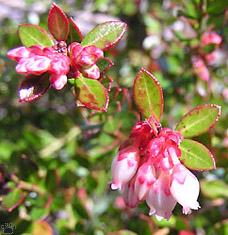 |
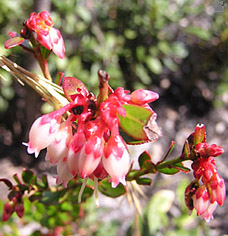 |
| Darrow's (Vaccinium darrowii, left) and shiny (V. myrsinites) blueberries are common shrubs of Florida sand scrub. ABS. |
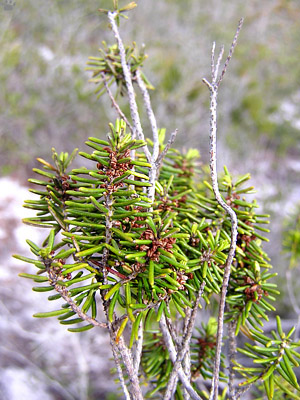
Sand rosemary (Ceratiola ericoides), ABS. |
In central Florida, large fields of ancient sand dunes were once covered with Florida scrub - a unique plant and animal community shaped by frequent flooding and burning. Very little of it still remains. Sand rosemary is a common species here. |
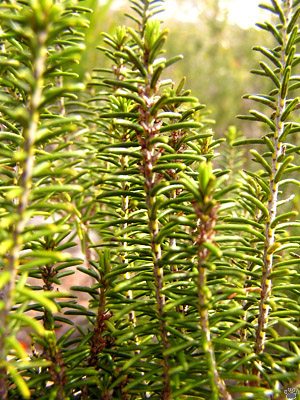
Sand rosemary, ABS. |
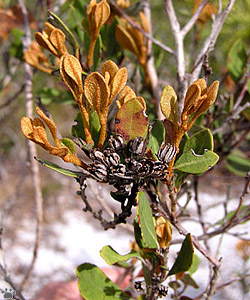
Staggerbrush (Lyonia ferruginea), ABS. |
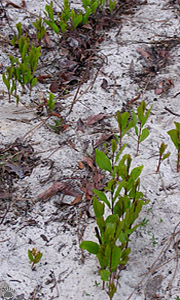
Gopher apple (Licania michauxi), ABS. |
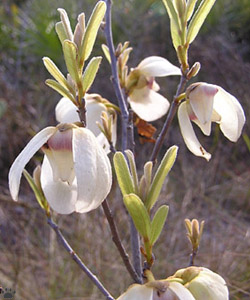
Slimleaf pawpaw (Asimina angustifolia), ABS. |
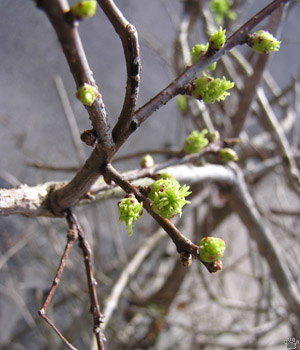
Pygmy fringe tree (Chionanthus pygmaeus), ABS. |
About forty plant species, fifty invertebrates and four vertebrate species are endemic to Florida scrub. One particularly rare plant is pygmy fringe tree, which survives only at six locations. |

Pygmy fringe tree, ABS. |
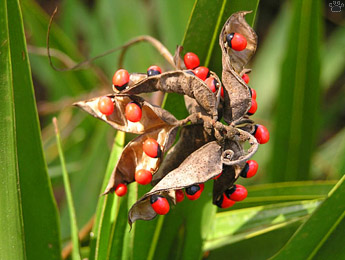
Rosary pea (Arbus precatorius) is highly poisonous. Ocala National Forest. |
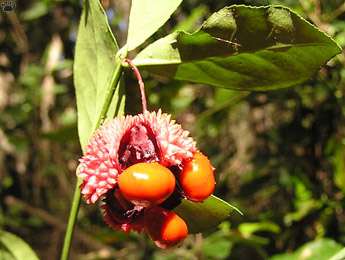
Strawberry bush (Euonymus americana). Ocala National Forest. |
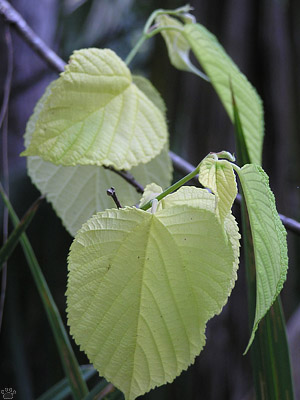
Red mulberry (Morus rubra), Wekiwa Springs State Park. |
There are many other beautiful shrubs and small trees in Florida. As in almost every other plant group, many species are introduced. Wastelands around big cities often have more introduced plants than native ones. |
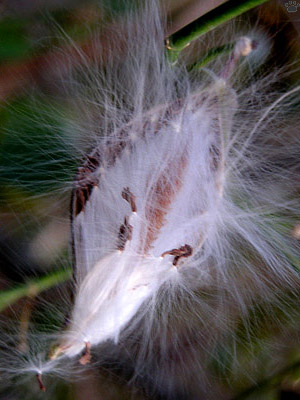
Opening fruit of an unidentified shrub, WSSP. |

Gardenia (Gardenia jasminoides), introduced. Kendall. |
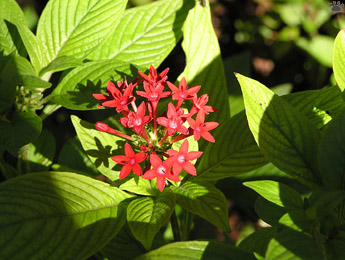
Star cluster (Pentas lanceolata), introduced. Ft. Lauderdale. |
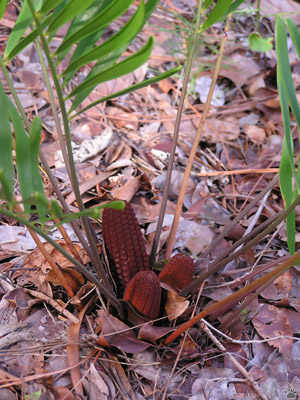
Coontie (Zamia integrifolia), Everglades National Park. |
One of the most ancient Florida plants is coontie, the only native cycad. Although poisonous, this "living fossil" was an important food plant for native people. They made starch- rich flour from its roots after carefully leaching out the poison. |
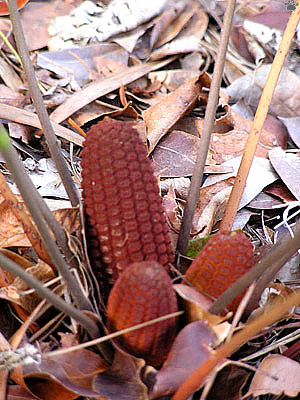
Coontie cones, ENP. |
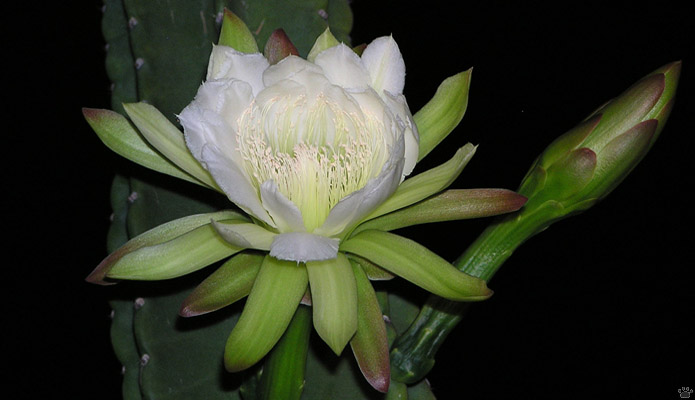
Introduced cactus Cereus hildmannianus, Big Pine Key, NKDR. |
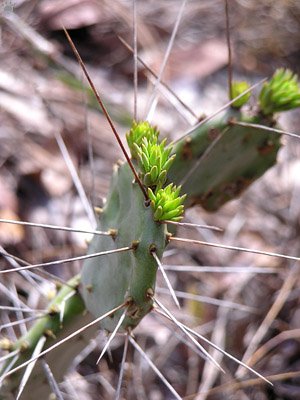
Eastern prickly-pear (Opuntia humifusa) in the beginning of the
rainy season, Hawks Bluff Natural Area. |
Of about twenty cactus species native to Florida, most are very rare and difficult to find. Only a few prickly-pear species occur throughout the state, mostly in dry areas. They are surprisingly fire- resistant, and can be common on overgrazed pastures. |
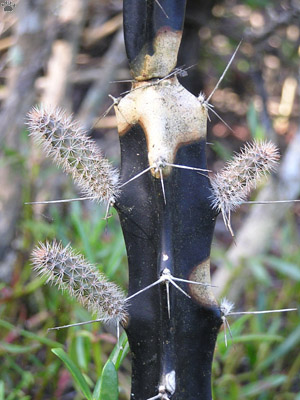
Triangle cactus (Acanthocereus tetragonus) recovering after a
shrub fire, ENP. |
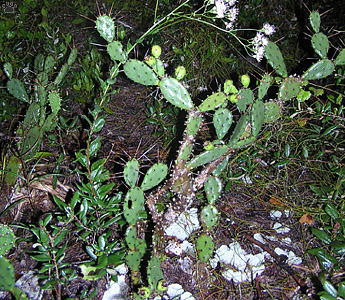
Shellmound prickly-pear (O. stricta), HBNA. |
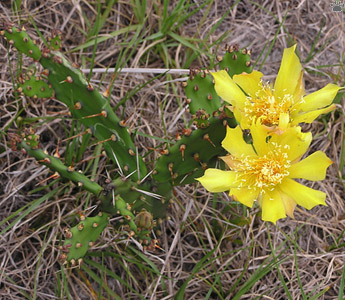
Cockspur prickly-pear (O. pusilla), Cape Canaveral National Recreation Area. |

Dutchman's pipe (Aristolochia durior), Rookery Bay Aquatic Preserve. |
Being a tropical country, southern Florida has a lot of interesting vines and creepers. Some are night-blooming species, and finding them always feels like magic. |
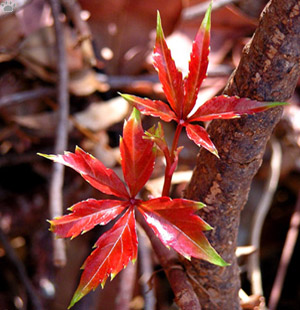
Virginia creeper (Parthenocissus quinquefolia), Tiger Creek Preserve. |
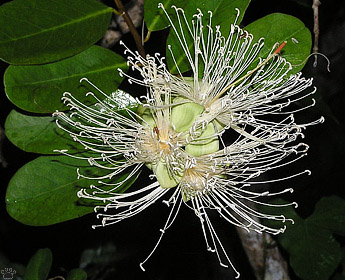 |
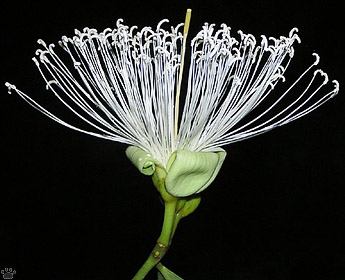 |
| Limber caper (Capparis flexuosa), ENP. |
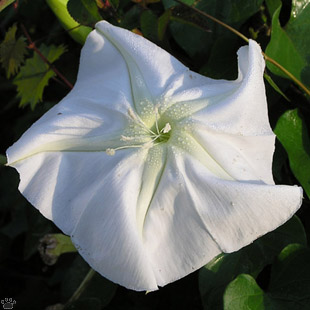
Tropical white morning-glory (Ipomoea alba), ENP. |
Florida has fifteen native species of morning- glory, some of them very common. In summer, tropical white morning- glory is blooming along canals and small rivers. Thousands of large white flowers look really impressive in the moonlight. |
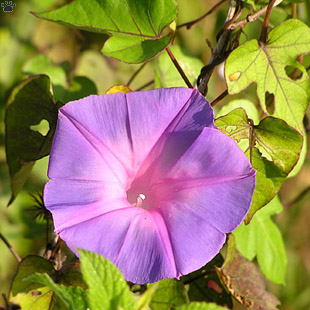
Oceanblue morning-glory (I. indica), ENP. |
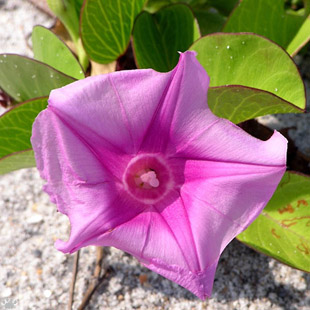
Railroad vine (I. pes-carpae), Bill Bags Cape Florida State Park. |
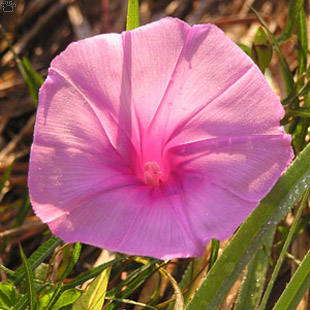
Saltmarsh morning-glory (I. sagittata), Island Bay Wilderness. |
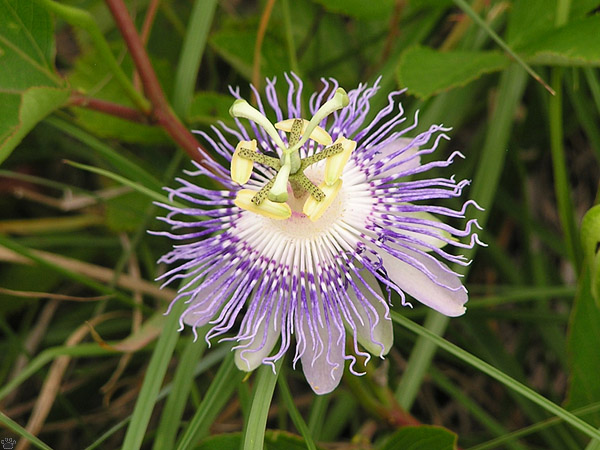
Purple passionflower (Passiflora incarnata), Lake Okeechobee. |
Part 5. Plants of water and air
Back to Part 3
Home
|











































